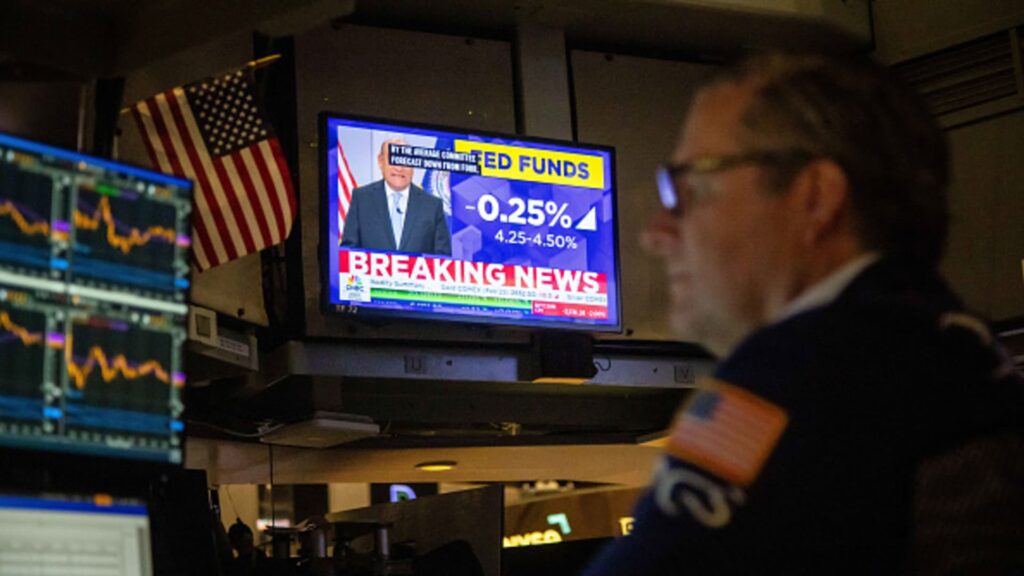On Wednesday, December 18, 2024, a television station captured the announcement of the Federal Reserve’s interest rate cut while broadcasting from the New York Stock Exchange (NYSE).
Michael Nagle | Bloomberg | Getty Images
The VIX, known as Wall Street’s fear gauge, experienced a dramatic increase—marking the second largest percentage spike in its history—after the Federal Reserve revealed a scaling back of its rate-cutting strategy, creating turmoil in the stock market.
The CBOE Volatility Index skyrocketed by 74%, ending the day at 27.62, up from around 15 earlier in the trading session. This dramatic rise is only surpassed by a 115% surge to over 37 back in February 2018, during a significant escalation in volatility for the market.
The sudden spike came on the heels of the central bank’s announcement that it anticipates reducing interest rates only twice in the coming year, a decrease from the previously projected four cuts made in September. This news left investors uneasy as they were hoping for lower rates to continue propelling the bull market forward. The Dow Jones Industrial Average nosedived by 1,100 points, marking its tenth consecutive loss.
Typically, a VIX value exceeding 20 signals heightened fear within the market. However, most of this year, the VIX remained subdued below that threshold, raising concerns among investors who feared that complacency had taken root in the market.
The VIX is derived from the prices of put and call options on the S&P 500. A spike in the index often reflects a rush by investors seeking protection through put options when anticipating a market downturn.
CBOE Volatility Index, 5 days
Earlier in 2024, there was another notable surge in the VIX. On August 5, fears of a potential U.S. recession and a significant unwinding of the yen carry trade contributed to a roughly 65% increase, driving the VIX above 38. On that day, the index briefly exceeded 65 during intraday trading.
By Thursday, the VIX had settled slightly above the 20 mark, representing a reduction of more than 25% compared to the previous day’s drastic peak.


